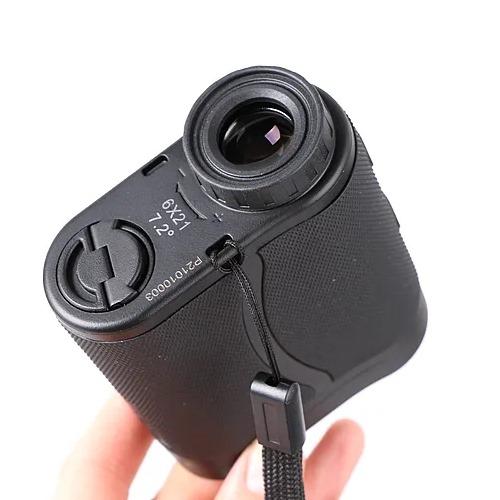

The X-Vision 875 PLC Rangefinder is your go-to companion whether you're on the golf course or tracking game in the woods. With models like the RFP875 and RFO1600, you're equipped with a precision tool that ensures accurate readings up to 875 yards and 1640 yards respectively. Both models feature advanced displays that guarantee clarity even in low-light conditions, allowing you to focus on your target without any distractions.
Designed for versatility, this rangefinder offers four distinct modes—Standard, Rain, Golf, and Hunting—tailoring the functionality to suit your specific needs. Whether you're navigating through fog or needing to pinpoint a flag on the green, the X-Vision rangefinder makes it simple with just two buttons for quick operation. Lightweight and compact, it’s ideal for all outdoor enthusiasts who demand reliability and precision in various environments.
Key Features:
- HIGH-PRECISION RANGING for accurate distance measurements, ensuring you never miss a target.
- DIVERSE RANGING MODES accommodate varying needs, from hunting to golfing, enhancing usability.
- LONG-DISTANCE CAPABILITY of up to 1640 yards for the RFO1600, perfect for spotting game far away.
- USER-FRIENDLY DESIGN with only two buttons for easy operation, making it accessible for all skill levels.
- COMPACT WEIGHT allows for easy carrying during extended outdoor activities without adding bulk.
- ANGLE MEASUREMENT accurate within 1 degree ensures precise angle readings, critical for elevation changes.
- LOW-LIGHT FRIENDLY with OLED display options for clear visibility in challenging lighting conditions.
- DURABLE CONSTRUCTION withstands outdoor elements, ensuring longevity in rugged environments.
Technical Specifications Table
| Feature | Specification |
|---|---|
| Magnification | 6x |
| Range (RFP875) | Up to 875 yards |
| Range (RFO1600) | Up to 1640 yards |
| Display Type | PDLC Smart Glass (RFP875), Red OLED (RFO1600) |
| Battery Type | Single CR2 |
| Weight | Lightweight |
| Angle Measurement | 90 degrees, accurate within 1 degree |
What’s in the Box?
- Cleaning cloth
- Soft pouch
- Lanyard
- Poly bag
Customer Reviews
“I've used my RFP875 for both golf and hunting, and the clarity is amazing—no complaints!”
“The RFO1600 is a game changer for my long-range shooting practice. Highly recommend!”
FAQ
How does the X-Vision 875 PLC perform in low-light conditions?
The RFP875 and RFO1600 feature displays designed explicitly for low-light environments, ensuring you still get accurate readings even as the sun sets.
What sets the RFP875 apart from the RFO1600?
While both rangefinders share many features, the main difference is in their maximum ranging distance—875 yards for the RFP875 and 1640 for the RFO1600. Choose based on your specific needs!
Similar Models
Looking for more rangefinders? Explore our selection of X-Vision products, including the RFO1600 for extended ranges and the compact RFP875 for mobility. Check out our full collection for additional optics tailored to elevate your outdoor adventures.
You May Also Like
Here’s some of our most similar products people are buying. Click to discover trending style.






